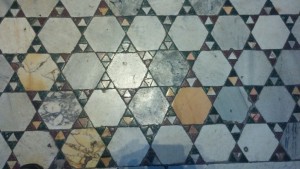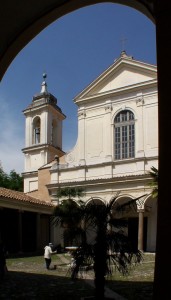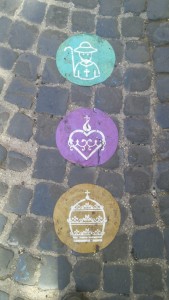Over the years Rome has been one of my favorite tour destinations. That is likely due to my fascination with history. There is no other city in the world to compare with Rome when it comes to layers of history. Ancient, early Christian, Medieval, Catholic, Renaissance, Baroque, and modern Rome are layered one upon the other like a lasagna. As a guide and tour operator, I love peeling back the layers to look at what is below. The whole city is like a great scavenger hunt through the ages.

Among Rome's many, many great sights, my favorite "lasagna" experience is the Basilica of San Clemente. A stone's throw from the Colosseum, this amazing little gem is largely overlooked by tourists. Yet for those in the know, it is a treasure. The 12th century church boasts some of Rome's best mosaics. The apse mosaic is particularly impressive with the very unusual element of an acanthus plant at the foot of the cross. I find that fascinating because the acanthus plant was a symbol of eternity (I guess because it is essential a weed that never dies) for the ancient, therefore pagan, Greeks. Also, there is a hand (the hand of God) reaching right out of the clouds to signify God's participation in the apse scene. The entire upper church is a great example of the constant recycling of materials one sees throughout Rome.
Before the age of Romanticism, the ancient past was not valued and leftover bits of ancient Rome were seen as readily available (and free) building materials in the poor Middle Ages. The shrewd observer will note that none of the columns match. The floor is decorated with smaller pieces of marble, probably taken from the forum. Tiny pieces were also used to decorate lamps and candlesticks. This style, copied all over Italy, is named for the family that developed the technique in the 13th century - Cosmatesque, named for the Cosmati family.
But far more impressive than the mosaics and recycled antiquities is that fact that the Basilica sits atop a 4th century church, long forgotten in the mists of time until a priest discovered supporting arches within a plastered wall. When he investigated, he found the second church, buried and forgotten underneath.
Archeological excavations ensued, revealing some of the oldest mosaics and earliest known Christian graffiti in the Eternal City. And low and behold, the 4th century church was built on the ruins of a pagan temple dedicated to Mithras from the first or second century. For a fee visitors can descend into the excavations to view the mosaics, graffiti, ancient altars, and even a copy of the altar of Mithras found underneath (original now in a museum). Like a Disney ride, it is a journey through time - or at least through a physical metaphor of the Roman lasagna effect.




